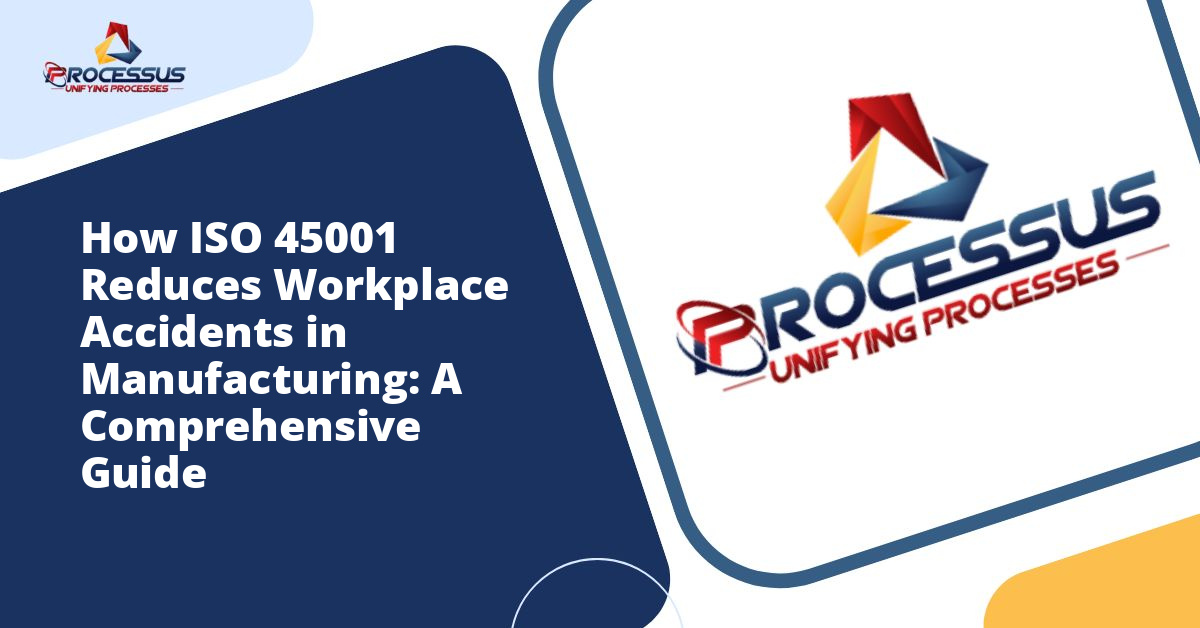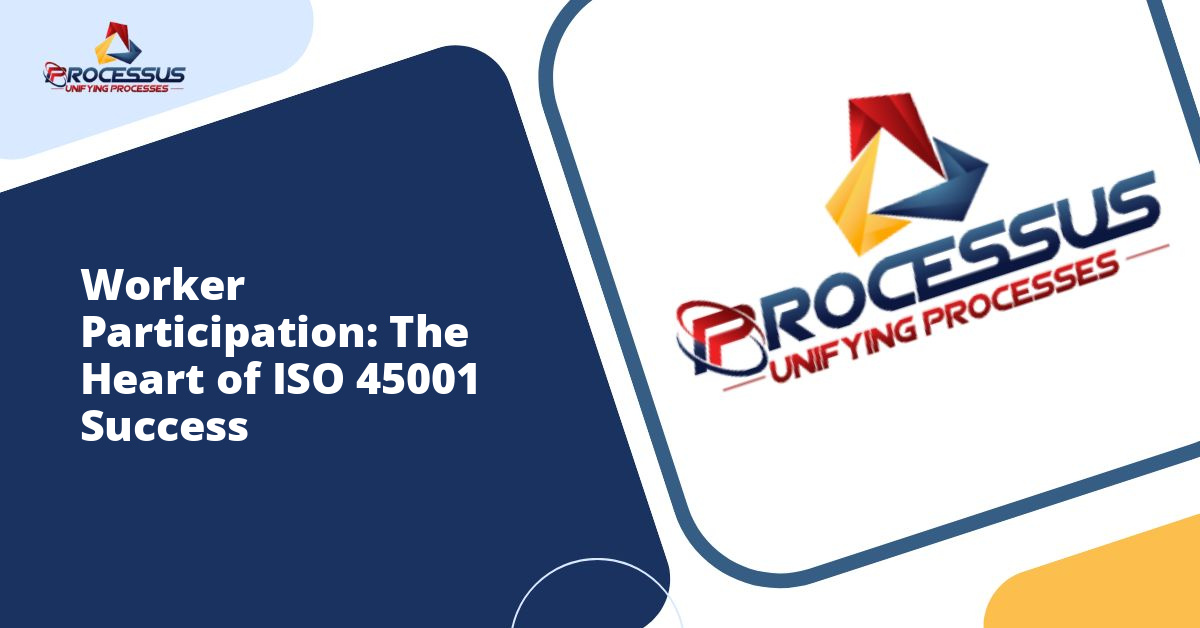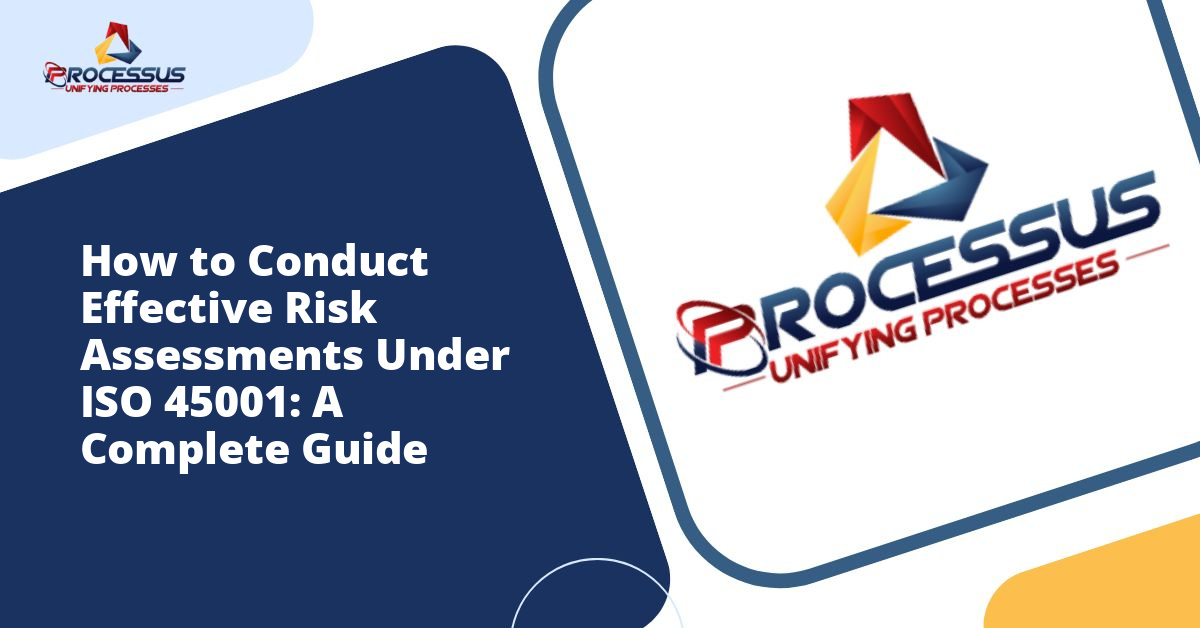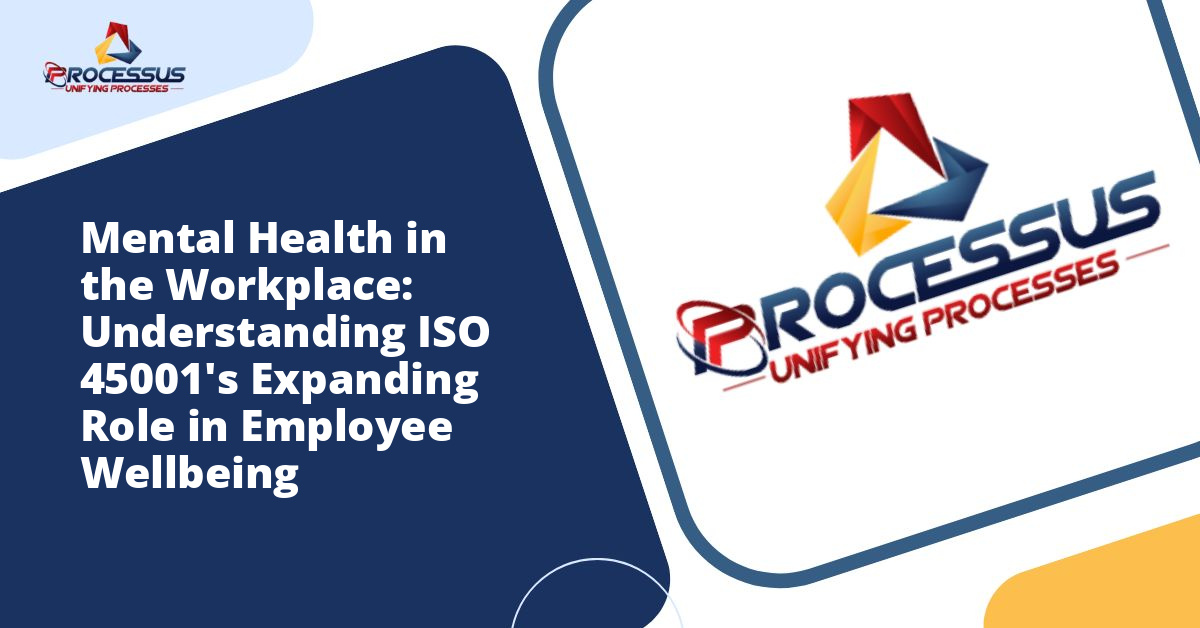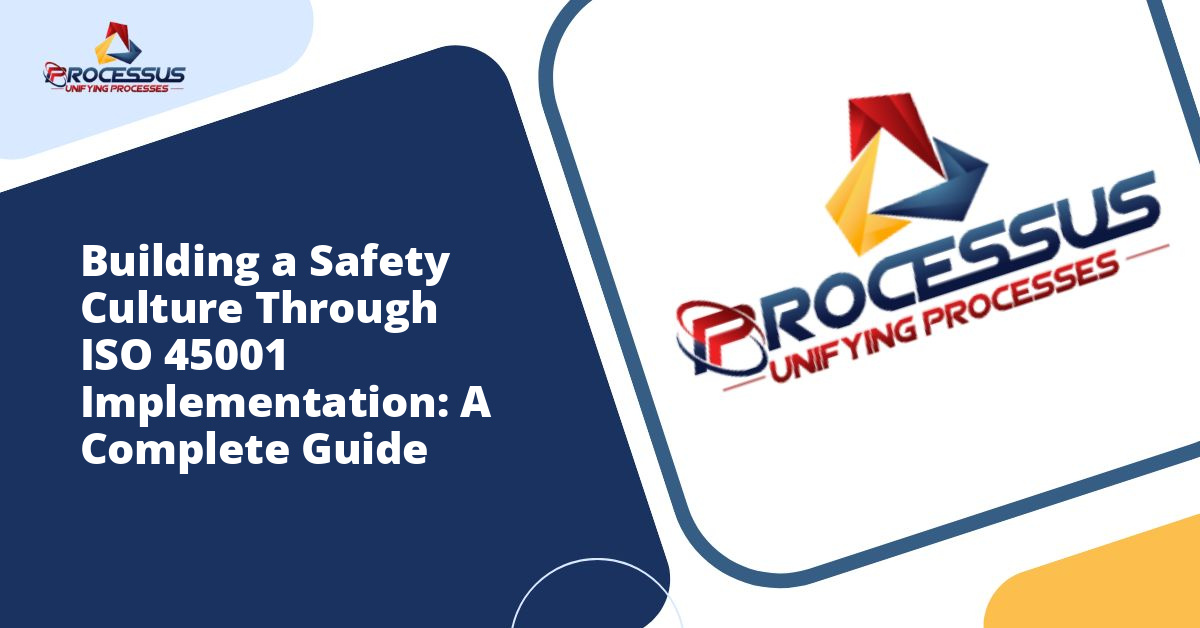Manufacturing environments present numerous hazards that put workers at risk every single day. From heavy machinery and chemical exposure to repetitive strain injuries and falls, the potential for workplace accidents remains a constant concern for manufacturing facilities worldwide. ISO 45001, the international standard for occupational health and safety management systems, has emerged as a powerful framework for reducing workplace accidents and creating safer working environments across the manufacturing sector.
This comprehensive guide explores how implementing ISO 45001 can significantly decrease workplace accidents in manufacturing settings, the mechanisms behind its effectiveness, and the tangible benefits organizations can expect when they commit to this globally recognized standard. You might also enjoy reading about ISO 45001: A Complete Guide to Occupational Health and Safety Management Systems.
Understanding ISO 45001 and Its Purpose
ISO 45001 represents the first global standard for occupational health and safety management systems. Published in March 2018, it replaced the previous OHSAS 18001 standard and provides a unified framework that organizations across all industries can adopt to improve employee safety and reduce workplace risks. You might also enjoy reading about Understanding ISO Standards: A Complete Guide to International Quality Management Systems.
The standard takes a proactive approach to preventing work-related injuries and illnesses by requiring organizations to identify hazards, assess risks, and implement controls before incidents occur. This preventive methodology stands in stark contrast to reactive approaches that only address safety concerns after accidents happen.
For manufacturing facilities, where workers interact with potentially dangerous equipment and processes daily, this proactive stance becomes particularly valuable. The standard requires leadership commitment, worker participation, and continuous improvement, creating a comprehensive safety culture that permeates every level of the organization.
The Manufacturing Safety Challenge
Before examining how ISO 45001 addresses workplace accidents, it helps to understand the specific safety challenges that manufacturing environments present.
Common Manufacturing Hazards
Manufacturing facilities face multiple categories of workplace hazards that can result in serious injuries or fatalities:
- Mechanical hazards from moving machinery parts, conveyor systems, and automated equipment
- Chemical exposures from raw materials, cleaning agents, and production byproducts
- Physical hazards including noise, vibration, extreme temperatures, and poor ergonomics
- Electrical hazards from high-voltage equipment and faulty wiring
- Falls from elevated work platforms, ladders, and unguarded openings
- Material handling injuries from lifting, pushing, and pulling heavy objects
- Repetitive motion injuries from assembly line work and continuous operation tasks
Statistics consistently show that manufacturing ranks among the industries with the highest rates of workplace injuries. According to workplace safety data, manufacturing workers experience higher than average rates of injuries requiring days away from work, and the industry accounts for a significant proportion of workplace fatalities annually.
The Cost of Workplace Accidents
Beyond the human suffering that workplace accidents cause, they also impose substantial financial burdens on manufacturing organizations. Direct costs include medical expenses, workers compensation claims, and potential legal fees. Indirect costs often exceed direct costs and include production downtime, equipment damage, overtime to compensate for absent workers, investigation time, increased insurance premiums, and damage to company reputation.
These financial impacts provide strong business justification for implementing comprehensive safety management systems like ISO 45001.
How ISO 45001 Creates Safer Manufacturing Environments
ISO 45001 reduces workplace accidents through several interconnected mechanisms that work together to create a robust safety culture and systematic hazard management approach.
Leadership Commitment and Accountability
One of the most powerful aspects of ISO 45001 is its emphasis on leadership responsibility. The standard explicitly requires top management to demonstrate leadership and commitment to the occupational health and safety management system. This requirement transforms safety from a compliance exercise into a strategic priority.
Leadership responsibilities under ISO 45001 include establishing the occupational health and safety policy, ensuring safety objectives align with business strategy, integrating safety requirements into business processes, and allocating necessary resources for the safety management system.
When executives and senior managers actively champion workplace safety, it sends a clear message throughout the organization that protecting workers is genuinely valued. This top-down commitment creates the foundation for sustainable safety improvements and accident reduction.
Systematic Hazard Identification and Risk Assessment
ISO 45001 requires organizations to establish, implement, and maintain processes for ongoing hazard identification and risk assessment. This systematic approach ensures that potential dangers are identified before they cause harm.
In manufacturing contexts, this means regularly examining all work activities, processes, and equipment to identify what could potentially cause injury or illness. The standard requires consideration of routine and non-routine activities, human factors, new or changed hazards, and potential emergency situations.
Once hazards are identified, organizations must assess the risks they present by evaluating the likelihood of harm occurring and the potential severity of consequences. This risk assessment enables prioritization so that the most serious risks receive immediate attention and resources.
The requirement for ongoing hazard identification means that as manufacturing processes change, new equipment is introduced, or working conditions evolve, the organization continuously reevaluates potential risks rather than relying on outdated assessments.
Hierarchy of Controls Implementation
ISO 45001 requires organizations to use the hierarchy of controls when determining how to eliminate hazards or reduce risks. This hierarchy prioritizes control measures based on their effectiveness, with elimination of hazards being the most effective approach and personal protective equipment being the least effective.
The hierarchy of controls includes:
- Elimination: Physically removing the hazard entirely
- Substitution: Replacing hazardous materials or processes with safer alternatives
- Engineering controls: Isolating people from hazards through machine guards, ventilation systems, or safety interlocks
- Administrative controls: Changing work procedures, implementing job rotation, or establishing safety protocols
- Personal protective equipment: Providing safety gear as the last line of defense
By requiring adherence to this hierarchy, ISO 45001 pushes manufacturing organizations toward more effective and permanent solutions rather than relying solely on personal protective equipment or administrative measures that depend on worker compliance.
Worker Participation and Consultation
A distinctive feature of ISO 45001 is its strong emphasis on worker participation in the occupational health and safety management system. The standard recognizes that workers who perform tasks daily often have the best understanding of associated hazards and practical solutions.
ISO 45001 requires organizations to establish processes for worker consultation and participation in hazard identification, risk assessment, incident investigation, safety policy development, and determination of control measures.
This participatory approach yields multiple benefits for accident reduction. Workers who actively participate in safety processes develop stronger safety awareness, are more likely to follow safety procedures they helped create, and can identify hazards that management might overlook. Additionally, this involvement fosters a sense of ownership over workplace safety that strengthens overall safety culture.
Competence and Training Requirements
ISO 45001 requires organizations to ensure that workers are competent to perform their tasks safely. This includes determining necessary competencies, providing appropriate training, and maintaining documented information as evidence of competence.
For manufacturing environments where specialized equipment operation and complex processes create significant hazards, this competence requirement proves particularly important. Inadequately trained workers face substantially higher accident risks, both for themselves and their colleagues.
The standard requires training not only on how to perform tasks but also on the hazards associated with work activities, relevant control measures, and procedures for reporting safety concerns. This comprehensive training approach ensures workers understand both what to do and why safety measures matter.
Operational Planning and Control
ISO 45001 requires organizations to establish, implement, and maintain processes needed to meet occupational health and safety requirements through operational planning and control. This includes implementing controls for identified risks, managing changes to processes or equipment, and controlling outsourced processes that affect safety.
In manufacturing settings, this translates to developing standard operating procedures for equipment operation, establishing maintenance schedules to keep machinery in safe condition, implementing permit systems for high-risk work, and ensuring that contractors follow the same safety standards as regular employees.
The management of change requirement proves especially valuable in reducing accidents. Many workplace incidents occur when processes or equipment change but associated risks are not properly assessed or communicated. ISO 45001 requires organizations to review the consequences of unintended changes and take action to mitigate adverse effects before implementing modifications.
Emergency Preparedness and Response
Manufacturing facilities face various potential emergency situations, from fires and chemical spills to severe injuries requiring immediate medical response. ISO 45001 requires organizations to establish, implement, and maintain processes for emergency preparedness and response.
This includes identifying potential emergency situations, planning response procedures, providing training for emergency response, periodically testing emergency procedures through drills, and evaluating performance after drills or actual emergencies.
Effective emergency preparedness reduces both the likelihood of emergencies escalating and the severity of consequences when incidents do occur. Well-trained workers who know how to respond appropriately can prevent minor incidents from becoming major disasters.
Incident Investigation and Corrective Action
When incidents do occur, ISO 45001 requires organizations to establish processes for investigating them, determining root causes, and implementing corrective actions to prevent recurrence. This systematic approach to learning from incidents helps organizations continuously improve their safety performance.
The standard requires investigation not only of actual injuries but also of near misses, which often provide early warning of serious hazards that have not yet resulted in harm. By investigating and addressing near misses, organizations can prevent future accidents.
Effective incident investigation looks beyond immediate causes to identify underlying systemic issues. Rather than blaming individual workers for mistakes, ISO 45001 encourages organizations to examine how their management systems may have contributed to incidents and what changes can prevent similar occurrences.
Performance Monitoring and Measurement
ISO 45001 requires organizations to establish processes for monitoring, measuring, analyzing, and evaluating safety performance. This includes both leading indicators that provide information about safety management system effectiveness before incidents occur and lagging indicators that track actual incident rates.
Leading indicators might include safety inspection completion rates, percentage of workers receiving required training, number of near misses reported, or safety suggestion implementation rates. Lagging indicators include injury frequency rates, lost time incidents, and severity of injuries.
Regular monitoring enables organizations to identify trends, recognize when performance deteriorates, and take corrective action before accident rates increase. This proactive monitoring stands in contrast to approaches that only pay attention to safety when serious incidents occur.
Management Review and Continuous Improvement
ISO 45001 requires top management to review the occupational health and safety management system at planned intervals to ensure its continuing suitability, adequacy, and effectiveness. These management reviews consider safety performance results, changes in external and internal issues affecting the organization, opportunities for continuous improvement, and adequacy of resources.
This requirement ensures that safety management receives regular attention at the highest organizational levels and that the system evolves to address changing circumstances and emerging risks. The continuous improvement philosophy embedded in ISO 45001 means that organizations never become complacent but constantly seek ways to enhance safety performance.
Evidence of ISO 45001 Effectiveness in Reducing Accidents
While individual organizational results vary based on implementation quality and existing safety performance, research and organizational experience demonstrate that ISO 45001 and its predecessor OHSAS 18001 effectively reduce workplace accidents in manufacturing environments.
Organizations implementing certified occupational health and safety management systems report substantial reductions in injury rates, often ranging from 30 to 60 percent within the first few years of implementation. Lost time injuries decrease as hazards are systematically identified and controlled before causing harm.
Beyond reducing accident frequency, certified systems also tend to reduce injury severity. By implementing effective controls and emergency response procedures, organizations minimize the consequences when incidents do occur.
Perhaps most significantly, certified organizations report cultural shifts where safety becomes embedded in daily operations rather than treated as a separate compliance activity. Workers become more engaged in safety processes, more willing to report concerns, and more likely to follow established procedures.
Implementation Considerations for Manufacturing Organizations
Manufacturing organizations considering ISO 45001 implementation should understand that certification requires commitment and resources but delivers returns that far exceed the investment.
Getting Started with ISO 45001
Successful implementation typically begins with obtaining leadership commitment and allocating necessary resources. Organizations should conduct a gap analysis to understand how current safety practices compare with ISO 45001 requirements and identify areas needing development.
Many manufacturers benefit from working with consultants experienced in ISO 45001 implementation, particularly during initial stages. These consultants can provide guidance on interpreting requirements, developing necessary documentation, and preparing for certification audits.
Implementation timelines vary depending on organizational size, complexity, and existing safety management maturity. Smaller manufacturers with relatively simple operations might achieve certification within six to twelve months, while larger, more complex facilities typically require twelve to twenty-four months.
Integration with Other Management Systems
Many manufacturing organizations already maintain quality management systems certified to ISO 9001 or environmental management systems certified to ISO 14001. ISO 45001 follows the same high-level structure as these standards, facilitating integration into a unified management system.
Integration offers efficiency benefits by reducing documentation duplication, combining audits, and creating synergies between quality, environmental, and safety objectives. For example, process controls that improve product quality may also reduce safety risks, while environmental controls that minimize chemical releases simultaneously protect worker health.
Maintaining Momentum After Certification
Obtaining ISO 45001 certification represents an important milestone but not the end of the journey. Organizations must maintain their safety management systems through ongoing hazard identification, regular training, periodic audits, and continuous improvement initiatives.
Sustaining engagement requires keeping safety visible through regular communications, celebrating safety achievements, and ensuring that the system remains practical rather than becoming a bureaucratic burden that workers view as disconnected from real work.
Conclusion
Manufacturing environments present inherent hazards that place workers at risk, but these risks can be systematically managed and substantially reduced through implementation of ISO 45001. The standard provides a comprehensive framework that addresses all critical elements of workplace safety, from leadership commitment and hazard identification to worker participation and continuous improvement.
By requiring proactive hazard management, systematic risk control, competent workers, and ongoing performance monitoring, ISO 45001 prevents accidents before they occur rather than merely reacting after harm happens. The evidence clearly demonstrates that manufacturing organizations implementing certified occupational health and safety management systems experience significant reductions in workplace injuries and illnesses.
Beyond the ethical imperative to protect workers from harm, implementing ISO 45001 delivers substantial business benefits through reduced insurance costs, improved productivity, enhanced reputation, and better regulatory compliance. The investment required for implementation returns multiples in value through accident prevention and operational improvements.
For manufacturing organizations serious about protecting their workers and creating genuinely safe workplaces, ISO 45001 offers a proven pathway to achieving these goals. The framework is comprehensive yet flexible enough to adapt to any manufacturing context, from small specialized producers to large-scale industrial facilities.
As manufacturing processes become increasingly automated and complex, systematic approaches to safety management become ever more critical. ISO 45001 provides the structure and rigor necessary to manage modern manufacturing risks while fostering the culture of continuous improvement that characterizes truly excellent organizations.
The question for manufacturing leaders is not whether they can afford to implement ISO 45001, but whether they can afford not to. With worker safety, organizational reputation, and business sustainability at stake, implementing this internationally recognized standard represents one of the most important strategic decisions manufacturing organizations can make.

